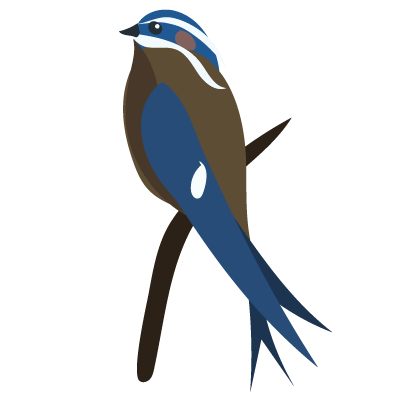Its Hummingbird Week on iNaturalist! Feb 28 - Mar 5, 2016

The Critter Calendar returns to the skies for some of the most acrobatic and vibrant birds in the world, the order Apodiformes - swifts, treeswifts, and hummingbirds!
The Apodiformes are similar in that they have strong, short humerus bones in their relatively long wings, and their legs are small and not useful for much more than perching. Apodiforme wings allow them to fly faster than almost all other birds, and in the case of hummingbirds, hover and even fly backwards!
Here are the three extant families which comprise the Apodiformes:
Swifts (Apodidae)
Small acrobatic birds who catch insects on the wing, swifts are often confused with swallows, who hunt the same prey. Taxonomically they are separate, however, and are superficially similar due to convergent evolution. Best identified by silhouette, swifts have wings which are thin, sickle-shaped, and longer than their bodies, in comparison to the shorter, broader wings of swallows. Swifts also flap their wings less than swallows do and can reach speeds of over 70 mph. In fact, swifts are so at home in the air that they spend all their time there unless they’re nesting. Common Swifts have been known to sleep and even copulate in mid-air! Swifts use their tiny feet and legs to cling vertically to sites such as trees and chimneys, and the famous Cave Swifts of Asia and Oceania use their saliva to make nests on the walls of caves, which humans use to make bird’s nest soup. Swifts can be found nearly worldwide.

Treeswifts (Hemiprocnidae)

A small family consisting of one genus and four species, the treeswifts range through India, Southeast Asia and into New Guinea. While similar to the true swifts, treeswifts have softer plumage, facial ornaments such as crests, and longer forked tails. They also have feet with non-reversible hind toes, allowing them to perch on branches, something which true swifts are not able to do.
Hummingbirds (Trochilidae)
Recognizable due to their diminutive size (usually 3-5 inches in length), ultra-fast wing flapping (around 50 beats per second) and darting, hovering flight pattern, hummingbirds make up the bulk of Apodiformes species, with over 300 described species. Ranging throughout the Americas and the islands of the Caribbean, hummingbirds use their flying skills to sip nectar from flowers, supplementing that diet with small insects. Male hummingbirds, like the White-necked Jacobin, have gaudy iridescent plumage around their heads, gorget (throat), back and wings, and will orient themselves to flash the colors at females. Hummingbirds can often be found flitting about from flower to flower or perched on a bush or tree, establishing their territory by singing and calling.

If you think you see any of these this week, share your observations with us. We’ll be keeping track here. Happy Apodiforme hunting!





Comentarios
A little early for our area...
Añade un comentario